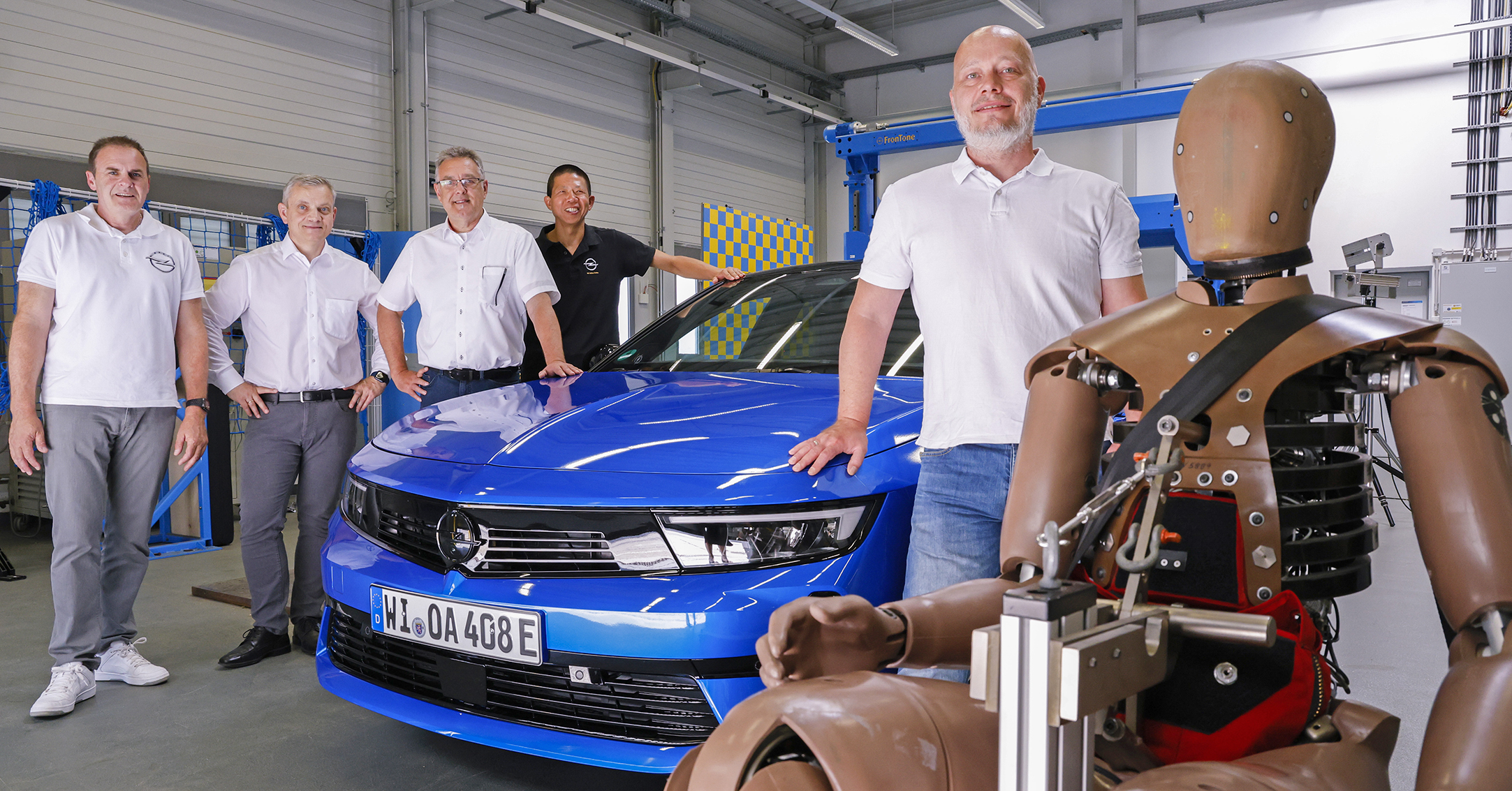The newly developed electric motor with 115 kW/156 hp, the class-leading Intelli-Lux LED® Pixel Light with a total of 168 LED elements, the head-up display or the natural voice recognition „Hey Opel“ – the first electrified Opel Astra is full of technical highlights. But the engineers have also further developed the compact class bestseller in less visible areas. One safety specific feature now makes the new Astra Electric even safer: the adaptive belt force limiter. It controls the belt force, which acts on the body during an impact, even more precisely in order to further reduce injuries and protect the driver as much as possible.
The adaptively controlled restraint system has sensors that recognise the severity of the accident and optimally adapt the belt force to the course of the crash. A plus in safety that can make all the difference. Despite all the airbags and assistance systems: “The seat belt is still the most important lifesaver in the car,” says Peter Schüßler, Manager of Passive Restraint Systems at Opel in Rüsselsheim. And the most important of all safety features is celebrating an even-number anniversary this summer: 50 years ago, in 1973, Opel began to install three-point belt systems with practical one-hand operation as standard in all models –three years before wearing seat belts became compulsory in Germany.

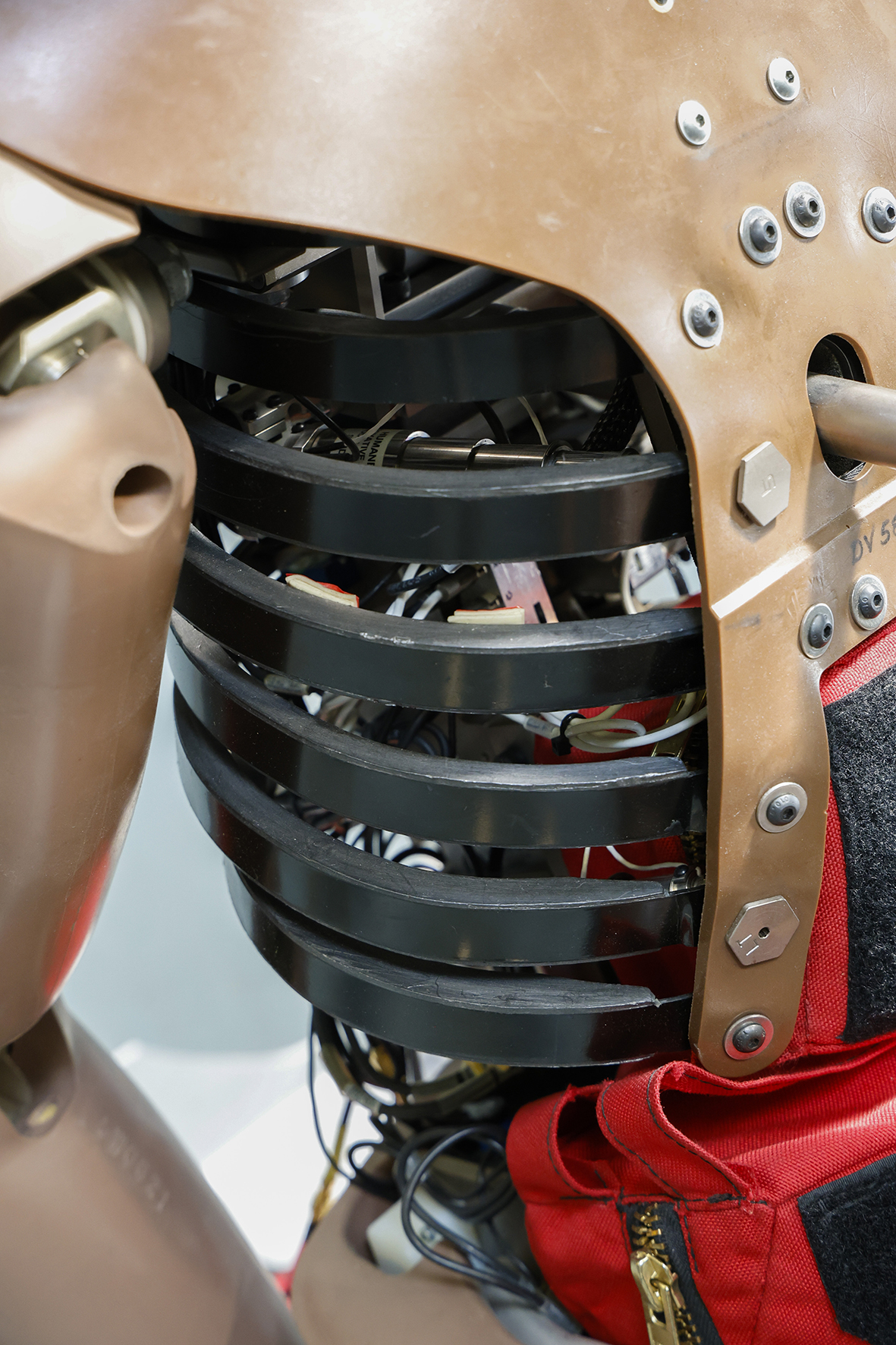
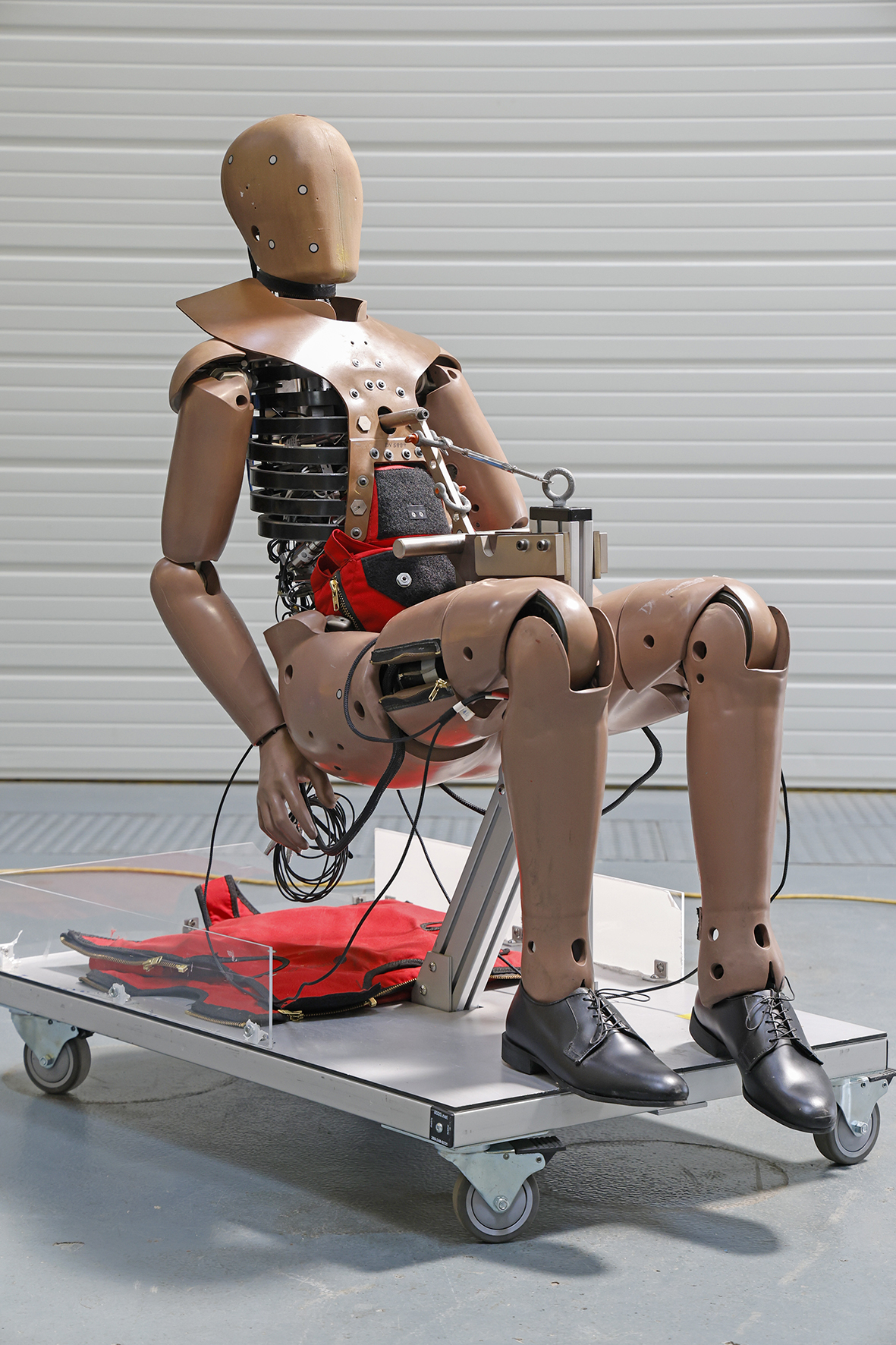


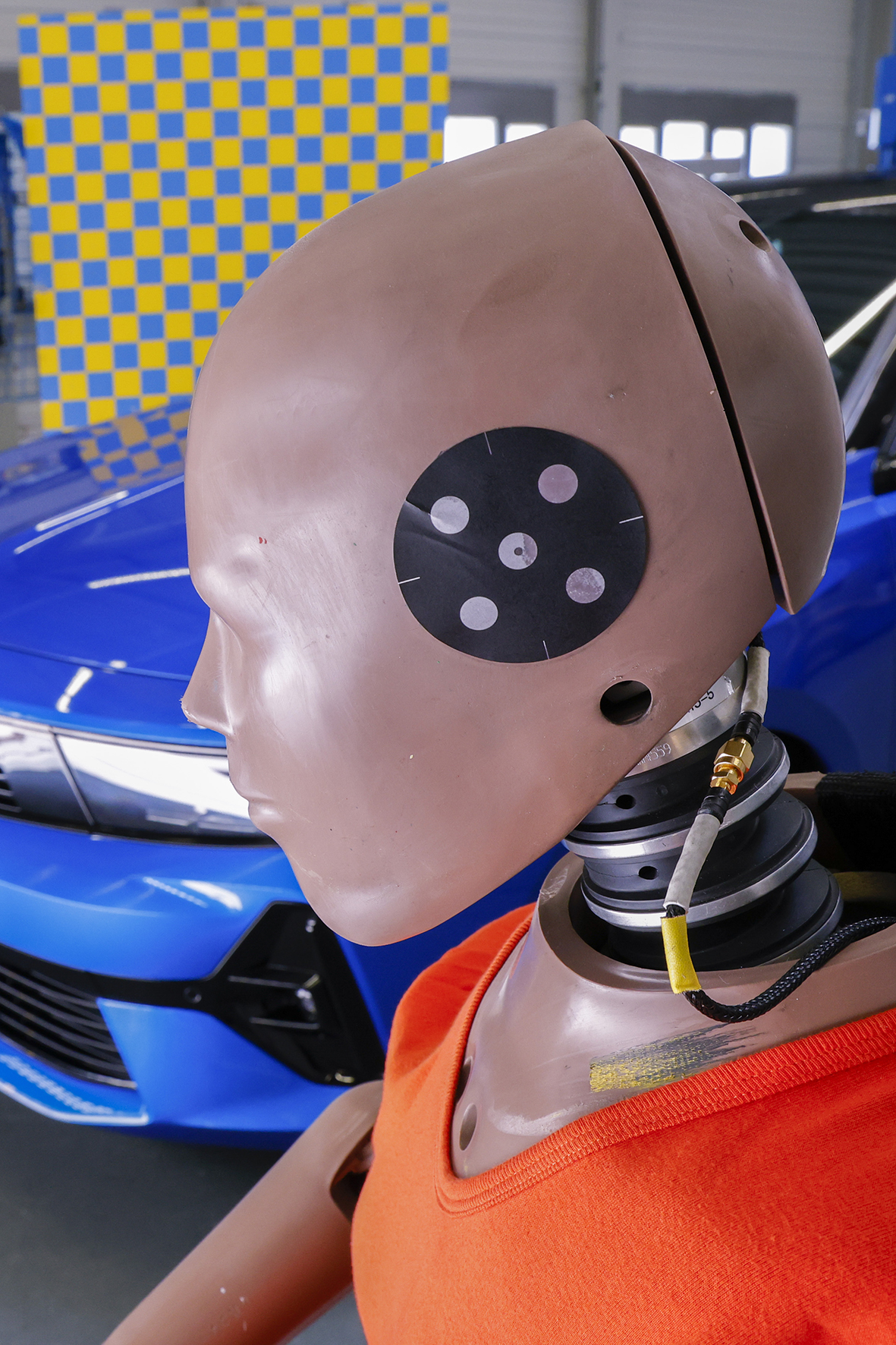
At the same time, Opel actively campaigned for the acceptance of seat belts early on and thus assumed a pioneering role. In 1969, Opel engineers demonstrated the results of their accident research programme to representatives of the media at the Dudenhofen Test Centre. The most important message: more than half of all accident victims could still be alive if they had worn seat belts. At the beginning of 1972, Opel’s management sent a letter to all employees, asking them to wear their seat belts – and offered them discounted belts for retrofitting. The offer proved hugely popular with 12,000 sets being provided within a very short time.
Irrational debate
The general public were somewhat more reluctant to accept the seat belt as an essential part of vehicle safety. Millions of people initially refused to “buckle up” when it became compulsory to wear seat belts as of January 1, 1976. At that time, many considered it to be too cumbersome to wear a seat belt. Especially when the car was used by different family members and the seat belt had to be adjusted in each case. This problem was soon solved by the automatic seat belt retractor. For a long time, however, there seemed to be no cure for various prejudices such as: The belt curtails personal freedom, and its safety effect is questionable. But the concerns were silenced when the number of road fatalities began to fall.
Simultaneously, the safety specialists were constantly improving the systems. In 1986, the Opel Omega was the first car in the world to offer height-adjustable seat belts at the front and rear seats as standard. In 1991, Opel presented the belt tensioner in the Astra F, followed by the full-size airbag and active safety systems such as anti-lock braking and the electronic stability programme.
The perfect duo
Airbags, in particular, further reduce the risk of injury significantly – “But driver and passengers must still be buckled up,” says Torsten Kerz, safety expert for occupant protection. “Belt and airbag only provide optimum protection in combination. One system restrains the body in the event of a collision, the other cushions the impact.” The seat belt absorbs around two-thirds of the energy of an impact. The first belt force limiters were used from the 2000s to avoid peak loads. Other improvements increase comfort, such as the electric seat belt feeder in convertibles.
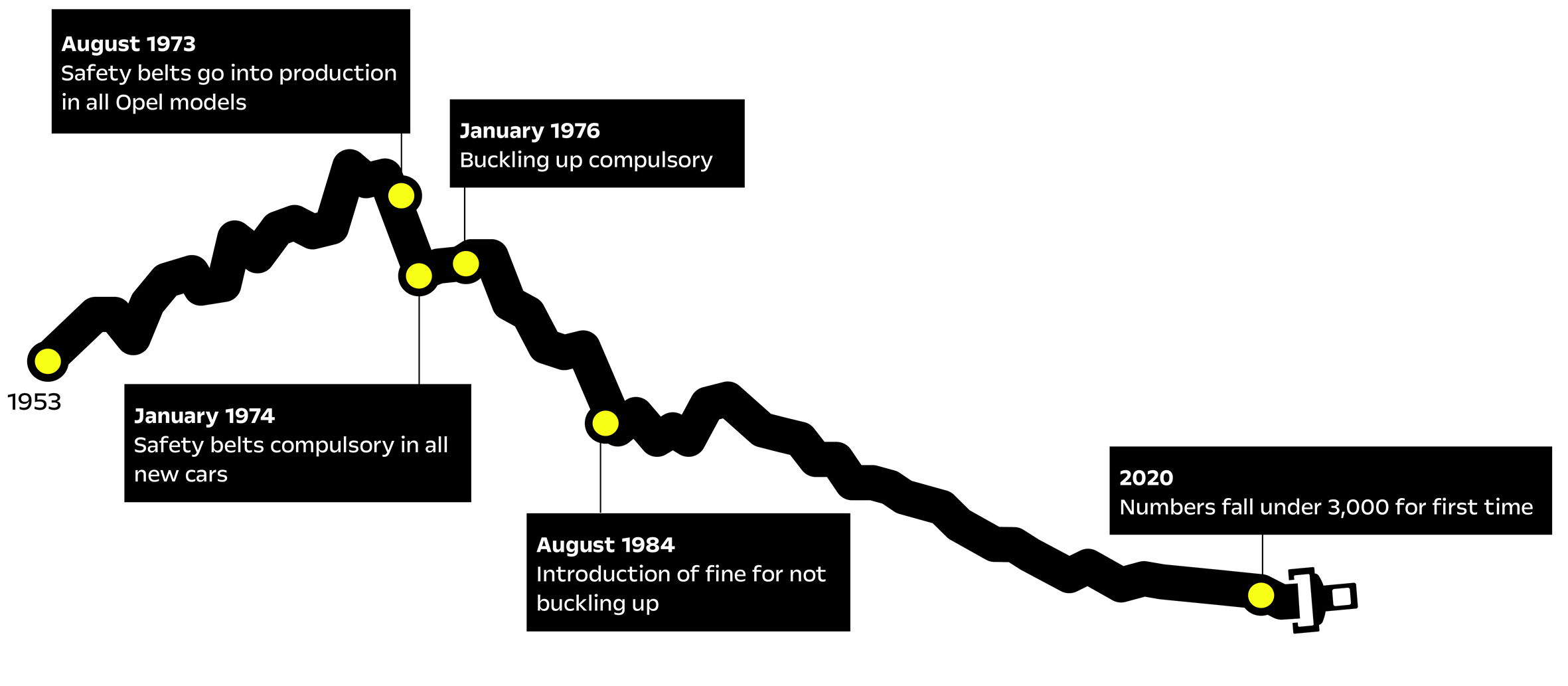
A long success story
With more than 20,000 victims, the number of road deaths in Germany reached a sad peak in 1970. Politicians reacted. The speed on country roads was limited to a maximum of 100 km/h, the blood alcohol content limit was set at 0.8. However, the number only dropped significantly when seat belts were introduced in 1976, and in 1984 a fine was due for non-compliance. In 2020 there were fewer than 3,000 road deaths for the first time.
A lot has happened in 50 years: an average of 15 metres of seat belts are installed in every Opel model. In total, after five decades, this results in around 750 million metres of seat belt webbing. This corresponds to 18 circumnavigations of the equator.

The collapsible steering column
The Opel engineers identified another key factor for more safety back in the 1960s: the safety steering column. Preventing the steering wheel and column from penetrating the passenger compartment is still one of the starting points of the safety strategy. “In the event of an impact, the steering column collapses slightly,” says Klaas Hillmann, expert for passive restraint systems. “The system, in combination with the seat belt and airbag, enables a dynamic deformation distance of up to 100 millimetres.” Crucial millimetres that minimise the risk of injury.
The adaptive belt force limiter in the Astra Electric has a further developed “anti-lock braking system”. “The belt force is electronically controlled during the course of the impact,” explains seat belt specialist Hoang-Thai Nguyen. “Four sensors in the THOR crash test dummy measure the biomechanical load acting on the chest.” In earlier versions, only single measurements were possible. This increase in sensitivity was made possible by the latest generation of crash test dummies, which have been in use since 2020.
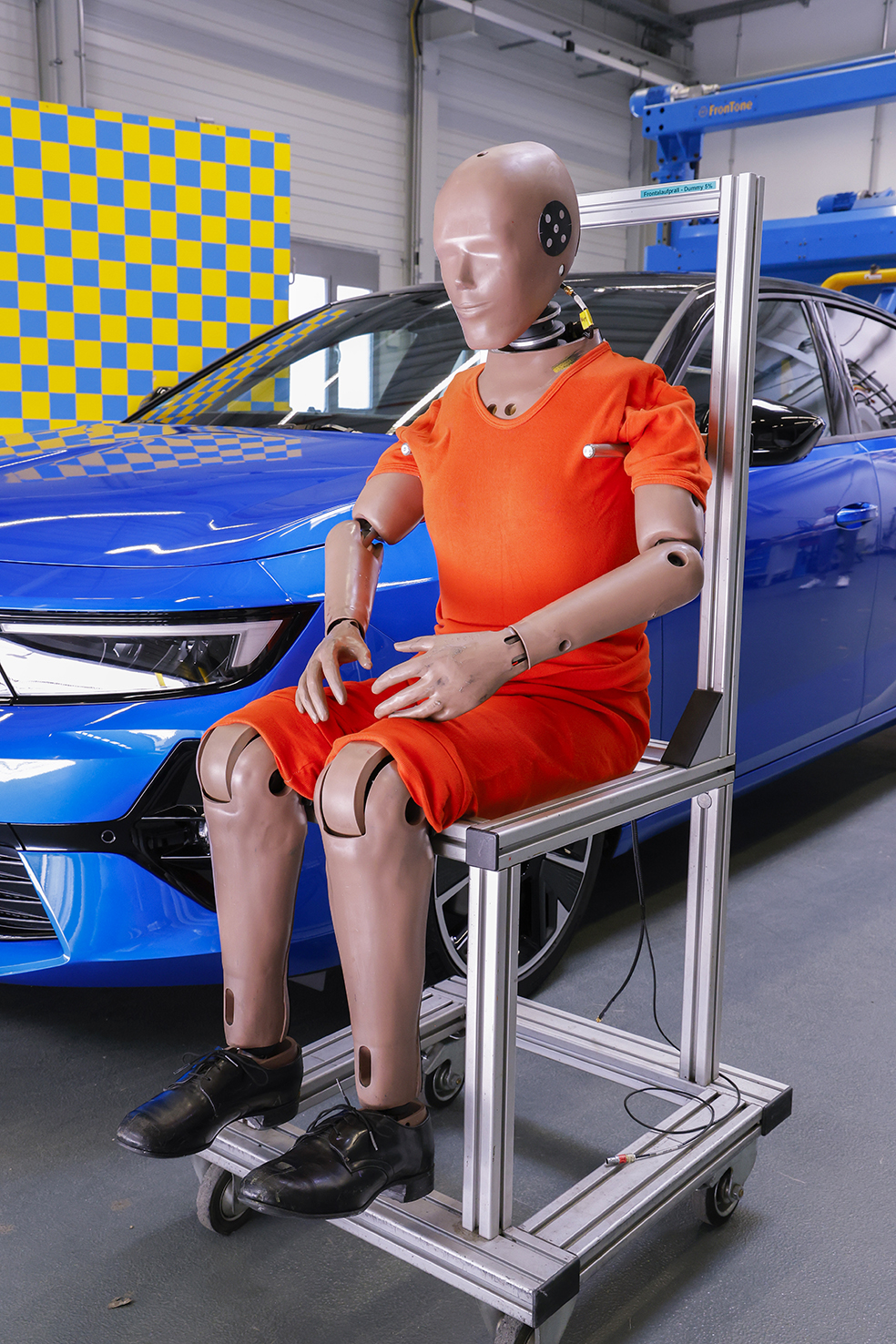
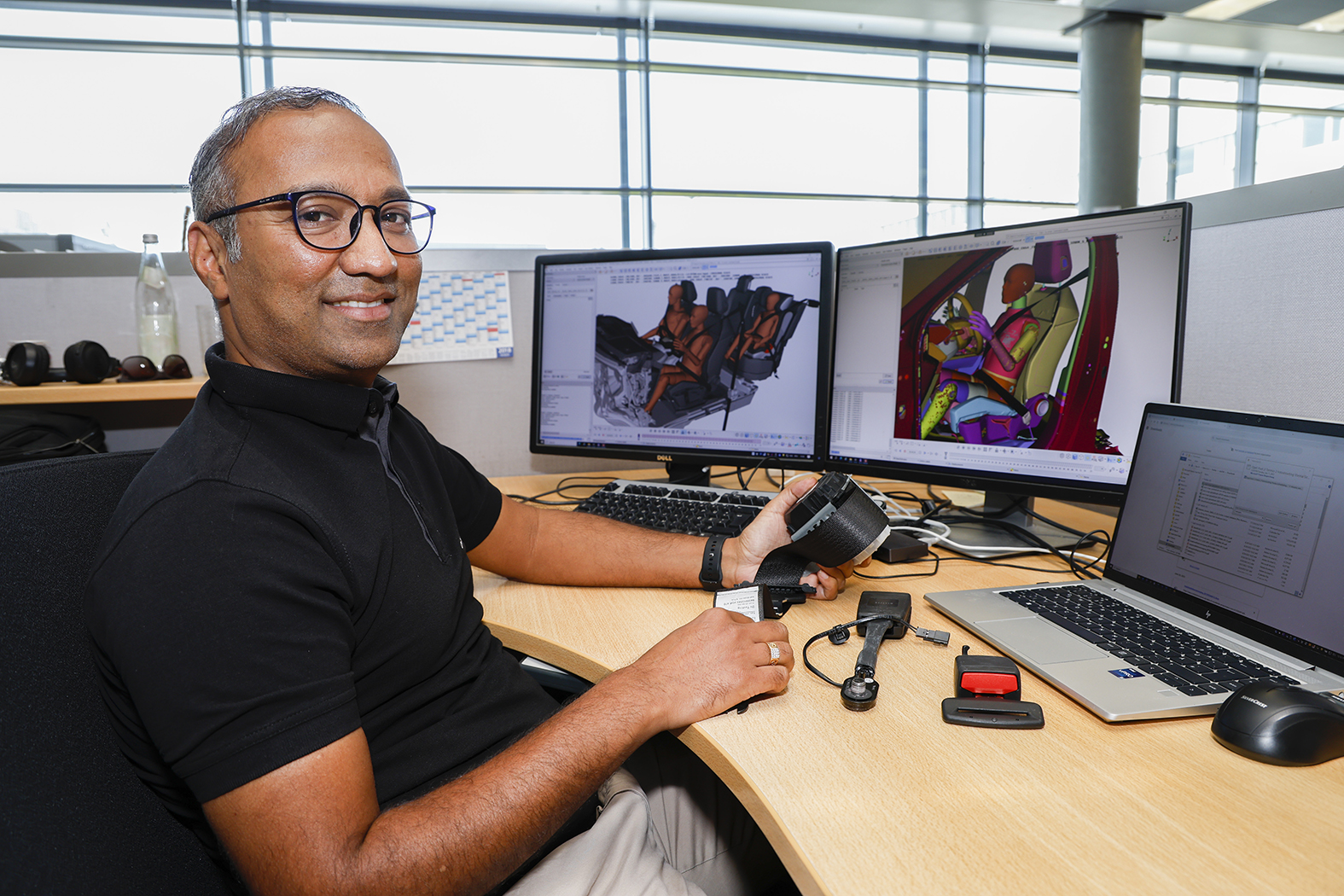

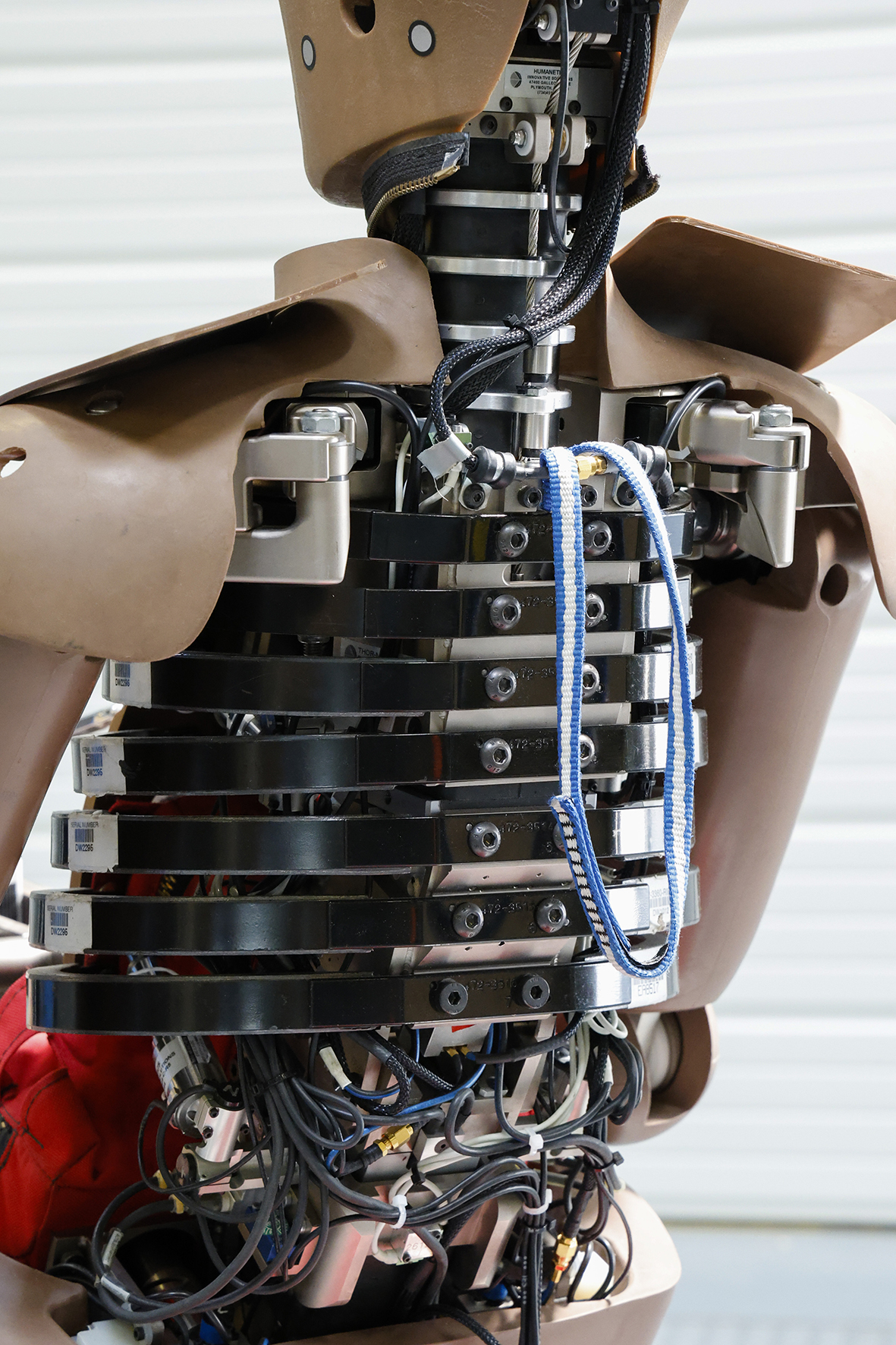
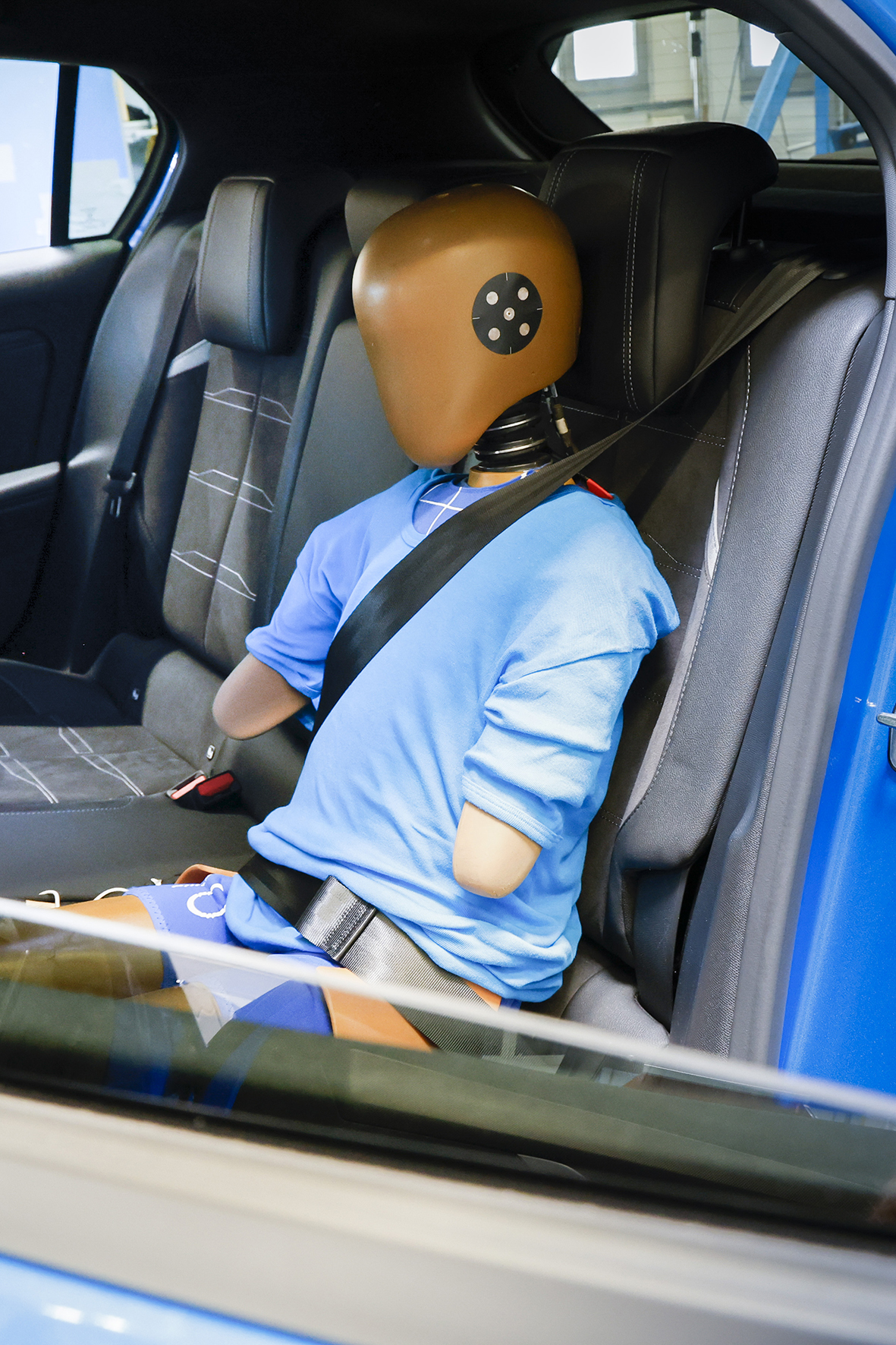

Crash test dummies are actually quite clever
The development of the safety belt is inextricably linked to the further development of the intelligent high-tech dummies that are used in tests to simulate the effects of an impact on the human body before a safety system is approved for series production. The youngest generation is known as THOR. The abbreviation stands for “Test device for Human Occupant Restraint”. Equipped with over 120 sensors, THOR electronically senses and communicates what happens to it in the event of an impact. With this dummy’s help, the adaptive belt force limiter was developed, which was first used in the Opel Mokka and now in the Astra. It is another milestone in the decades-long development of passive safety features. And the possibilities are far from exhausted.
Exciting changes ahead
From 2026, for example, consumer protection tests are to evaluate injury values that consider the more fragile bone structure of senior citizens. The team in Rüsselsheim also has its sights set firmly on the more distant future: automated driving will bring with it a lot of changes. Above all, because vehicle occupants will no longer necessarily sit facing forwards, but might face each other. And some could even be lying down. Seat belts could be fully integrated into the seats. “We are already working intensively on what this means in detail for the restraint systems,” explains Peter Schüßler. With automated driving, the success story of seat belts, which has lasted for five decades, will then enter a new era of saving lives.
Rüsselsheim’s pioneering role
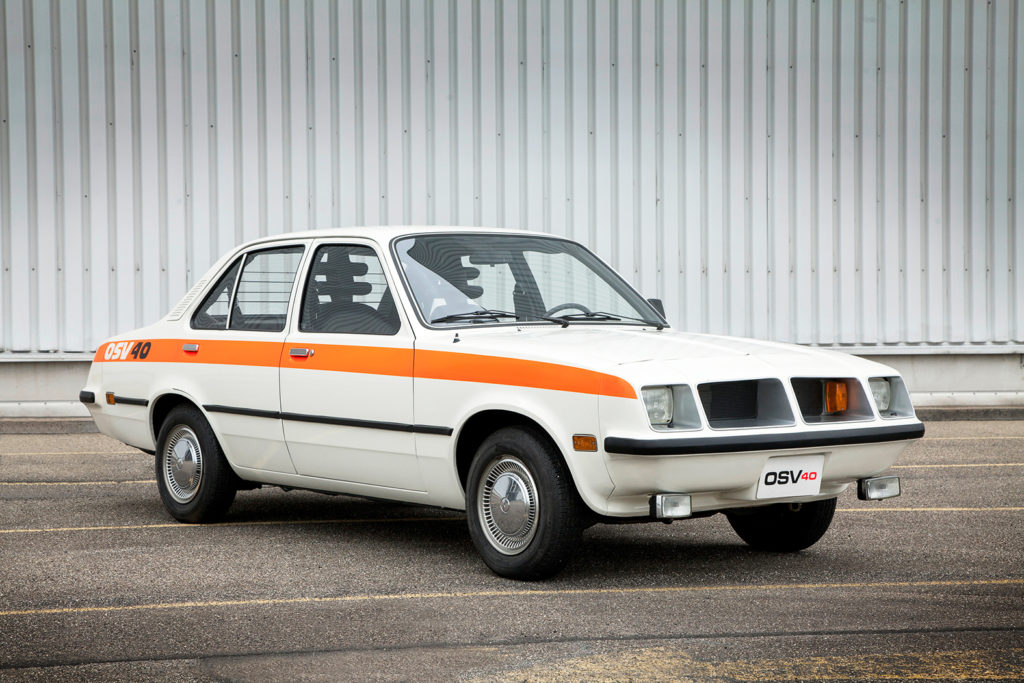
Safety has always been a high priority at Opel. For example, the all-steel unitary body introduced with the Olympia in 1935 made it possible for the first time to implement a stable passenger compartment and specific crumple zones. Opel had already tested the seat belt intensively in the 1960s and decided to offer the restraint system as an option for selected models. From April 1968, the Kadett, Admiral and Diplomat, among others, could be ordered with front seat belts. The classic Manta A coupé followed in October 1970. Seatbelts were also available as standard in the sporty models – such as the Rallye Kadett from 1967 and a year later the Commodore GS.
From the early 1970s, occupant protection became a particular focus. A testament to this is the Opel OSV 40. The 1974 study based on the Kadett C boasted numerous innovative safety features. OSV stands for Opel Safety Vehicle and the number 40 for the frontal impact speed in miles per hour for which the OSV 40 is designed. For greater safety reserves in the event of a side impact, the engineers filled the cavities in the sills and doors with polyurethane foam, and the large bumpers also have such fillings. In the interior, all surfaces that the occupants could come into contact with in an accident are padded with polyurethane foam.
Finally, the seat belts fitted to all four seats raised the feeling of safety to a new level. The OSV 40 performed above average in crash tests. After an impact at 65 km/h, all four doors could still be opened. Some innovations of the safety study made it into production in a modified form, including the automatic belt tensioners and the consistent further development of the crumple zone.

August 2023
